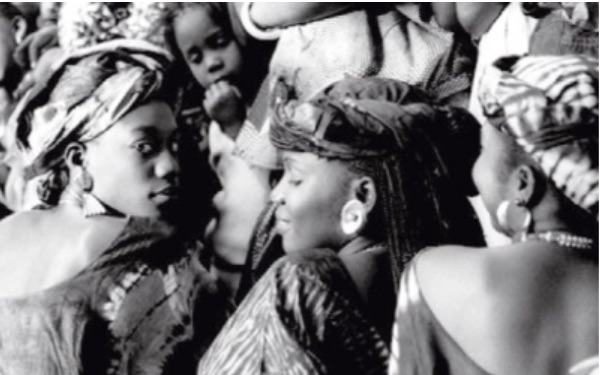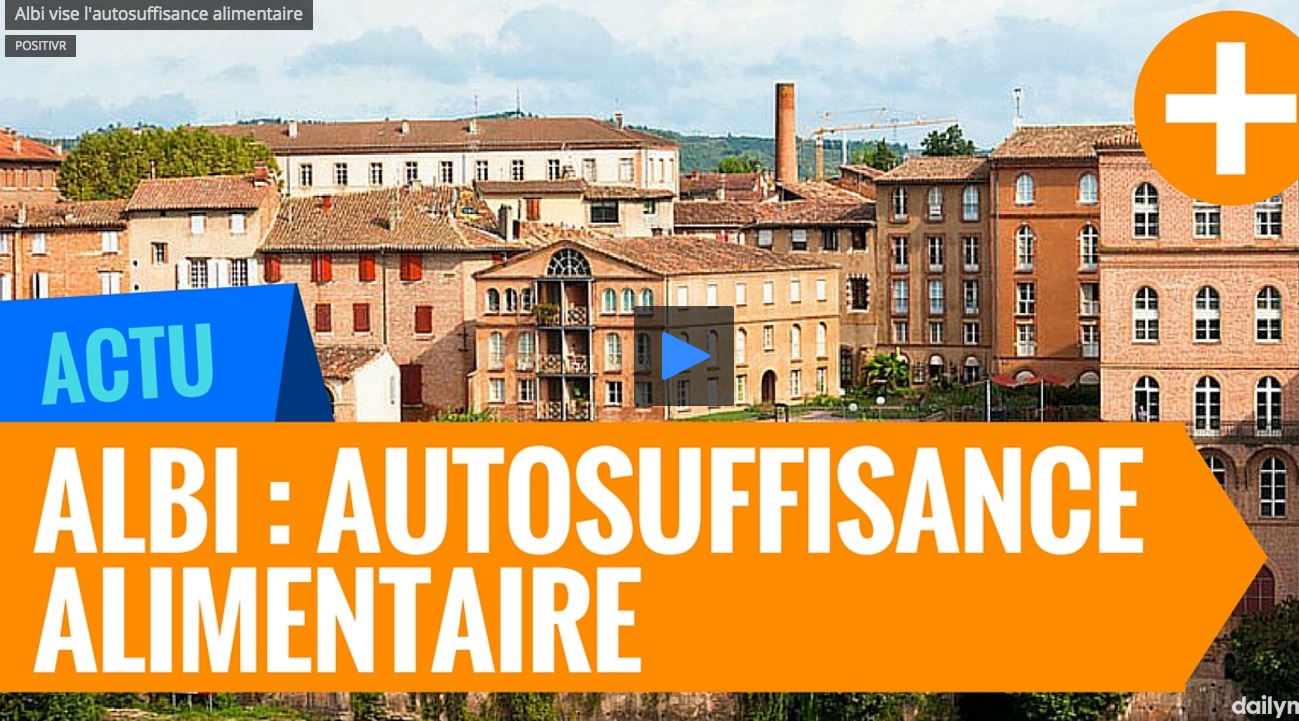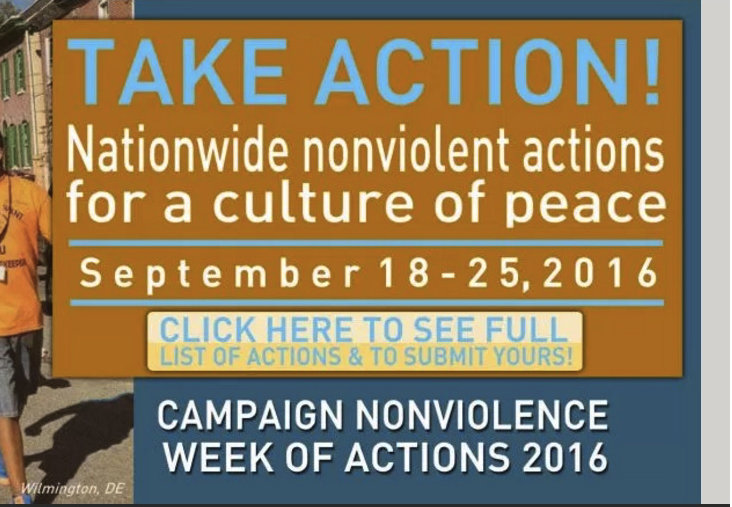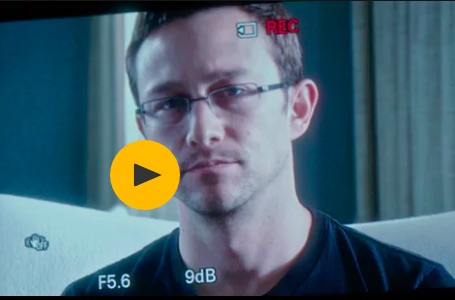There are indications that millions of people took part in this year’s International Day of Peace. For example, in the United States, Campaign Nonviolence mobilized more than 600 actions in all 50 states. Last year, according to Peace One Day “an estimated 1.5 billion people were exposed to Peace Day messages through activities ranging from dances to media campaigns.”
These mobilizations carry on an important tradition. At the beginning of this century, UNESCO and the United Nations mobilized 75 million people to sign the “Manifesto 2000” as part of the International Year for the Culture of Peace with the greatest number of signatures in India, Brazil, Colombia and South Korea. In 2005 and again in 2010, there was a mobilization for the UN International Decade for a Culture of Peace and we published reports from a thousand civil society organizations around the globe.
In recent years, the most universal mobilization for peace has been carried out at the local and national level for the International Day of Peace, September 21. During the International Peace Decade, detailed reports were gathered and published by the NGO Pathways to Peace. Their annual report in 2009 described 700+ events. However, in recent years, we have complained that there has not been an adequate survey of its global scope. of Peace Day events.
Therefore, this year CPNN has undertaken such a survey, using the International Day of Peace as the key word for a search in Google News during the week before and after 21 September, and by searching in a wide range of languages, including English, French, Spanish, Russian, Arabic, Ukrainian, Portuguese, Italian, and German. We have come up with 182 events in 85 countries.
Looking at the maps generated by this survey, we may remark the following:
1) The celebration is universal. The maps are filled from every region: USA/Canada, Latin America/Caribbean, Western Europe, Africa, Arab States, Russia/Ukraine, and Asia/Pacific. Gaps, such as Scandinavia and Eastern Europe can be explained by our failure to enlarge the search to include all of the national languages in these regions, not to mention the many national languages in Asia.
2) The celebration is especially intense in some of most conflictual regions of the world, such as the Ukraine, Kashmir/India/Pakistan, and Colombia/Venezuela. To this list we may add the United States.
Looking at the events listed from the Ukraine, one is struck by the fact that there is a more or less equal number of celebrations reported in the national language (from the western part of the country) and in Russian (from the eastern part of the country). Many of the articles describe a longing for the shared peace that they had in the past and have lost following the installation of a right-wing government in recent years. For example, from the Lutsk gymnasium №4z in the West Ukraine: “Previously, the streets of our country were peaceful, but the events today in the east of our country are effecting everyone, including students and teachers.” From Kovelchany “Now the concept of peace is more than ever important for our country.” And from Dnipropetrovsk in the East Ukraine: “Every day we help peaceful people affected by the war – displaced and wounded. This is the reality of peace and unity in our country today”
Looking at the events listed for Peace Day from India and Pakistan concerning Kashmir, we find references to recent bloodshed. From Mirpur, Pakistan : “The participants strongly condemned the increased human rights abuses by the Indian occupational forces in occupied Jammu & Kashmir.” And from Doraha, India “The volunteers condemned the attack on Indian soldiers at Uri Brigade Headquarters.”
The news is good from Colombia. . So it is not surprising that there are many positive celebrations of the Day of Peace associated in this country that is emerging from a half century of civil war. For example, in Tunja, Boyaca, Colombia : “To commemorate the international day of peace, the biggest event took place in San Pablo de Borbur where at least 300 young leaders from 14 to 28 years old met to share experiences during the First Meeting of Youth for Peace of Western Boyaca. They are young leaders from the municipalities of Chiquinquirá, Buenavista, Coper, La Victoria, San Miguel de Sema, Pauna, Quípama, Muzo, Briceño, Caldas, Maripí, Otanche, Tununguá, San Pablo de Borbur y Saboya.”
On the other hand, the articles from their neighbor, Venezuela, are divided along the conflict lines. Here is another country which, like the Ukraine, has suffered from America/European support to overthrow a left-wing government. For example, from Maiquetia, Vargas, Venezuela : “The people of Vargas . . . marked the beginning of activities of the International Week of Peace, in response to the guidelines of the President of the Republic, Nicolas Maduro, to reject the intentions of those who, from the right, want to promote the culture of violence to destabilize the country.”
The most extensive mobilization we could find was in the United States. The remarkable mobilization of Campaign Nonviolence is possible because of a growing awareness in that country of what they call an “epidemic of violence ” Participants in one of the day’s events protest the “ongoing US wars, proxy wars and military occupations, armed drones, US war crimes, and the increasing Pentagon budget,”
3) The largest number of events involve children, especially schoolchildren, in every part of the globe. A particularly moving example comes from Colombia where adults will soon vote in a referendum to ratify the peace accords. The rector of one of the schools sponsoring a mobilization of school children for Peace Day in Cartegana explained that ““Adults talk of ‘Yes or No’ because they are the ones who can vote in the plebiscite, but the children were not asked about this although it is they who will inherit a country at war or at peace.” She added that “what we say on this day is that children can also decide about peace.”
In the year 2000, 40% of the population of Colombia signed the Manifesto 2000, promising to promote a culture of peace in their daily lives. Now the people of Colombia are voting to ratify the peace accords and mobilizing their children to decide for peace. May they serve as our example in the gathering struggle to replace the culture of war by a culture of peace.
|
FREE FLOW OF INFORMATION |
WOMEN’S EQUALITY |
DEMOCRATIC PARTICIPATION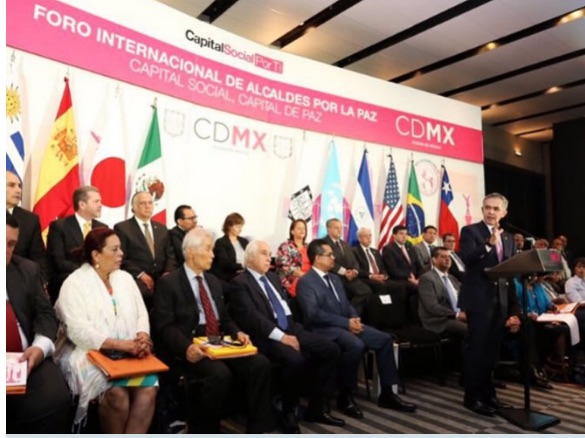 Mexico: Mancera opens the International Forum of ‘Mayors for Peace’ |
HUMAN RIGHTS The Elders welcome Myanmar peace conference |
|
TOLERANCE AND SOLIDARITY |
SUSTAINABLE DEVELOPMENT |
DISARMAMENT AND SECURITY |
EDUCATION FOR PEACE |

